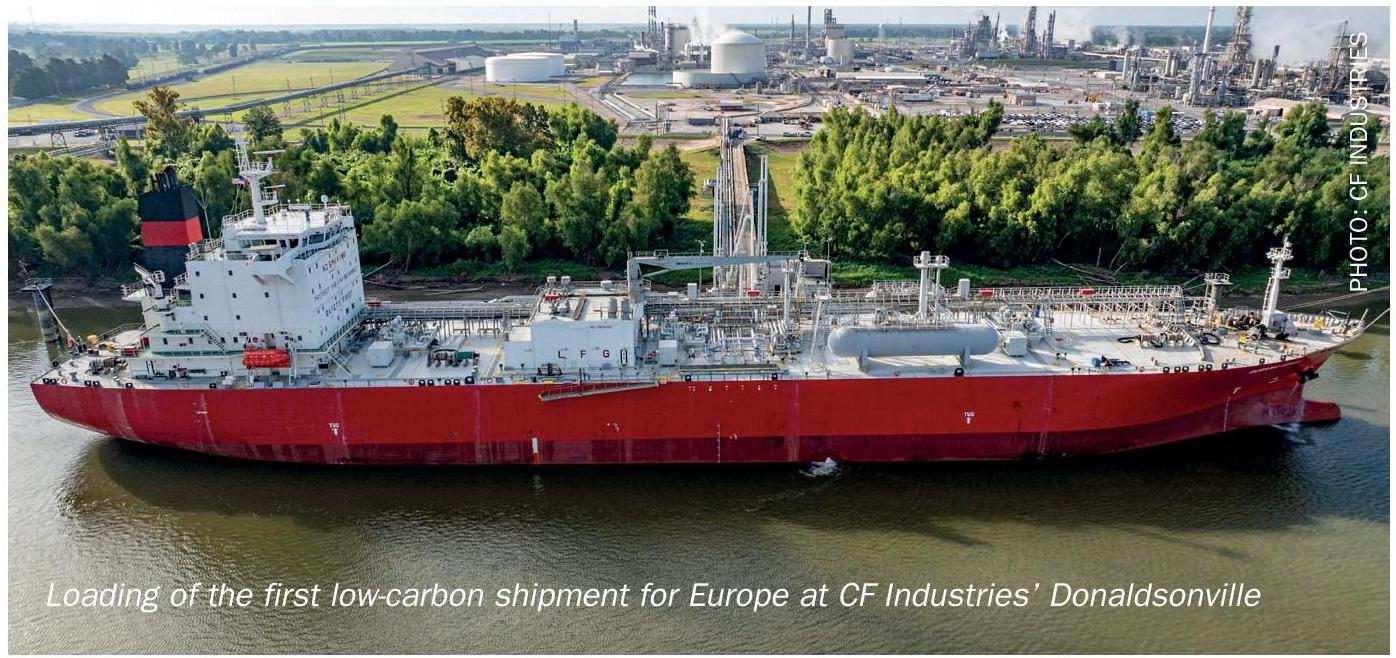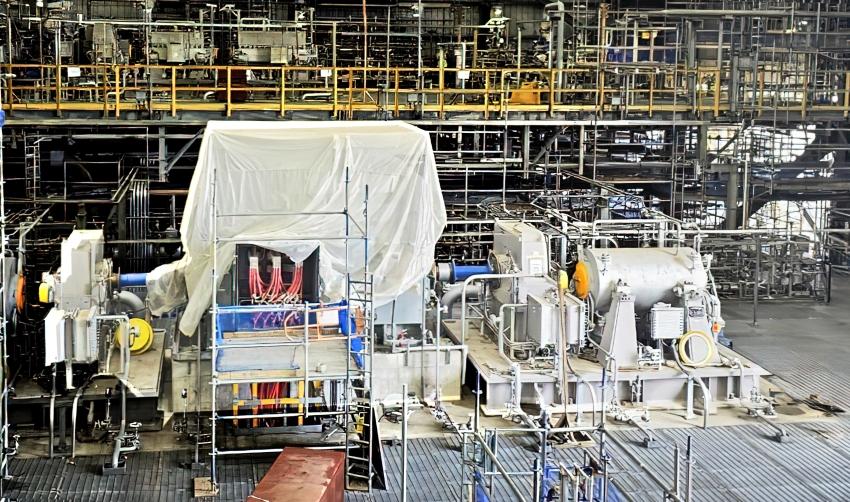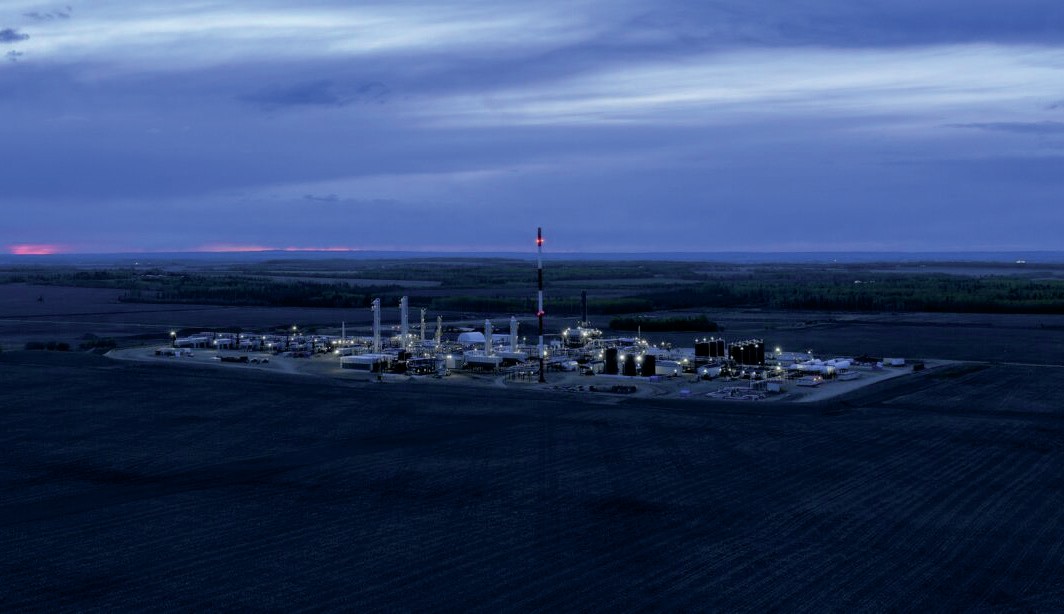Fertilizer International 496 May-Jun 2020

31 May 2020
North America’s phosphate producers
NORTH AMERICA’S PHOSPHATE PRODUCERS
North America’s phosphate producers
We profile the US ‘big three’ North American phosphate producers, Mosaic, Nutrien and Simplot, and disruptive market entrant Itafos.
For decades during the post-war period, North America enjoyed a commanding position globally as a supplier of phosphate rock and finished phosphate products. But since the 1990s the region’s global influence has been increasingly challenged by the rise of other centres of phosphate production – in China, Morocco, India, Saudi Arabia, Russia, Brazil and elsewhere.
Having once been a major phosphate import market, China, in particular, has transformed itself through a crash programme of industrialisation into the world’s largest producer of finished phosphates and a major phosphate exporter.
Although now eclipsed by China’s phosphate fertilizer (DAP/MAP/TSP) production might – a mammoth 37.2 million t/a of capacity – the US still ranks as the second largest global production centre (Figure 1) with a greater finished phosphates capacity (13.9 million t/a) than its nearest rival Morocco (11.4 million t/a).
North America itself also provides an attractive, large, mature and sophisticated agricultural market for its domestic phosphate fertilizer producers. Apparent consumption of phosphate fertilizers (DAP/MAP/TSP) in North America last year was an estimated 9.4 million tonnes – about 13 percent of total world consumption.
While total global phosphate consumption – for phosphoric acid, fertilizer and other products – is projected to grow from 47 million tonnes P2 O5 in 2019 to 50 million tonnes P2 O5 by 2023, US annual consumption is expected to remain stable at between 4.0-4.5 million tonnes P2 O5 over the medium-term.
Production overview
In the US, phosphate rock is mined by five companies from 10 mines in four states. This ore is beneficiated into 23.0 million tonnes of phosphate rock concentrate with a market value of around $1.6 billion. Florida and North Carolina combined account for more than 75 percent of total US output, with Idaho and Utah responsible for the remainder.
Canadian phosphate rock mining was never on the same scale as in the United States. Agrium, now part or Nutrien, closed Canada’s last operational phosphate rock mine in Kapuskasing, Ontario, in 2013 after its reserves were exhausted. Agrium/Nutrien subsequently supplied its Redwater, Alberta, phosphate fertilizer plant with imported Moroccan phosphate rock instead, until its recent closure. US phosphate rock production peaked at 54.4 million tonnes in 1980, accounting for 37 percent of world production that year. Production has slid inexorably since then to 23.0 million tonnes in 2019, around 10 percent of global production. That figure is less than one-quarter of China’s 110 million tonne phosphate rock production volume, and is also eclipsed by the 36 million tonnes produced by Morocco in 2019.


US phosphate reserves are estimated at one billion tonnes currently, sufficient for a further 30-40 years of mining at current extraction rates. In Florida, abundant unexploited reserves still exist south of the state’s historic mining area, centred on Polk, Manatee and Hillsborough Counties. The Mosaic Company was recently granted a permit for its Ona phosphate mine project in Hardee County, securing an additional 160 million tons of phosphate rock for future mining.
As domestic production has declined, the US has become a significant import destination for phosphate rock in recent years. Imports ranged from 1.6-2.8 million t/a between 2015-2019, with Peru (79%) and Morocco (20%) acting as the main suppliers during this period.
More than 95 percent of the phosphate rock mined in the United States is consumed in the production of phosphoric acid, an intermediate in the manufacture of phosphate fertilizers, both granular and liquid, and feed phosphates. About 50 percent of the wet-process phosphoric acid produced is subsequently exported in the form of diammonium (DAP) and monoammonium phosphate (MAP) and merchant-grade acid (MGA).
Despite no longer occupying the pre-eminent market position it once held, North America nevertheless remains a significant global player. North American phosphoric production, at its peak of 12 million t/a in the late 1990s, once accounted for almost 45 percent of world production. The region’s phos acid output has fallen back to below eight million t/a since then, accompanied by a drastic decline in world market share to around 15 percent (Figure 2, left).
North American phosphate product exports (DAP/MAP/TSP) have followed a similar trend. International deliveries once had a two-thirds share of the global export market, peaking at 12 million t/a in the late 1990s. Exports have steadily fallen during the intervening two decades, however, to around 3-4 million t/a currently, with a corresponding decline in world market share (Figure 2, right).
Domestic consolidation, international expansion
The North American phosphates industry has regularly been convulsed by a sequence of mergers and closures stretching back three decades (Figure 3). This has seen the industry consolidate from 18 companies operating 22 production sites in 1990 to just four companies operating from 10 production sites currently (Figure 4).
Yet the North American phosphate industry has shown remarkable resilience in response to a seemingly inexorable process of domestic closure and consolidation. Indeed, the industry has managed to maintain and arguably grow its global presence, securing access and logistical proximity to new markets by acquiring or helping to develop lower-cost international production assets.


Mosaic
The Mosaic Company, originally formed by the merger of Cargill’s crop nutrition division and IMC Global in 2004, is the largest phosphate producer in North America, with a 60 percent share of regional capacity (Figure 3) Mosaic sold 8.2 million tonnes of finished phosphates in 2019. These sales included 3.2 million tonnes of its MicroEssentials speciality product.
Mosaic extracts phosphate rock at four mines in Florida: South Fort Meade, South Pasture, Wingate and Four Corners. These collectively produced 12.2 million tonnes of phosphate rock in 2019, down two million tonnes on 2018, due to the continued idling of the South Pasture mine. Mosaic also operates three downstream phosphate production sites in Florida, namely New Wales – the largest phosphate production complex in North America – as well as production plants at Riverview and Bartow (Figure 4).
Mosaic also owns and operates two phosphate production plants at Uncle Sam and St James (Faustina) in Louisiana (Figure 4). Both plants – inherited from Freeport-Agrico via the IMC Global merger (Figure 3) – are supplied with phosphate rock from Mosaic’s Miski Mayo joint venture mine in Bayovar, Peru. Mosaic temporarily idled its Louisiana operations for part of 2019 in response to market conditions, reducing its annual phosphate plant operating rate to 83 percent.
In a major strategic decision, Mosaic closed its Plant City production site in Hillsborough County, Florida, last year – one of its highest cost plants – after a prolonged period of idling. The decision has removed around 1.3 million t/a of domestic production capacity from the US phosphate market.
Nutrien
Saskatoon-headquartered Nutrien, the world’s largest crop nutrient company, was formed from the merger of Agrium and PotashCorp in 2017. The Canadian fertilizer giant is the second largest phosphate fertilizer producer in North America. Its phosphates production capability of 1.7 million tonnes P2 O5 is equivalent to 24 percent of regional capacity (Figure 3).
Nutrien’s two main US production plants in Florida and North Carolina (Figure 4) have the capacity to produce around five million tonnes of phosphate fertilizers annually – with 3.4 million tonnes dedicated to liquid products and 1.6 million tonnes to solid products. Nutrien also has additional annual capacity of 0.7 million tonnes and 0.3 million tonnes for feed phosphate and purified phosphoric acid, respectively, from four smaller-scale US manufacturing sites.
The company manufactured and sold 2.9 million tonnes of finished phosphate products in 2019 – down 12 percent on 2018 due to adverse weather affecting North American spring and fall application seasons. This production volume included 2.1 million tonnes of phosphate fertilizers and 0.8 million tonnes of phosphate destined for the feed and industrial market. These phosphate tonnages compare with Nutrien’s massive product sales of 11.5 million tonnes for potash and 10.3 million nitrogen tonnes in 2019.
Nutrien used the 2017 merger as an opportunity to rationalise its phosphate operations and eliminate any reliance on higher cost phosphate rock imports. This included the decision to end phosphate production at Agrium’s Redwater plant in Alberta. This non-integrated plant, which was reliant on imported phosphate rock supplied by Morocco’s OCP, was reconfigured to produce ammonium sulphate instead – part of a $200 million investment in high-return brownfield projects. Nutrien also closed its smaller Geismar, Louisiana, phosphate plant inherited from PotashCorp at the end of 2018 – another site reliant on imported phosphate rock.
These closure decisions have allowed Nutrien to concentrate on increasing production at its two remaining integrated phosphate plants in Aurora, North Carolina, and White Springs, Florida (Figure 4). Both plants have their own dedicated phosphate rock mines. Nutrien also operates three phosphate feed plants in Marseilles, Illinois, Joplin, Missouri and Weeping Water, Nebraska, together with an industrial phosphoric acid plant in Harrison, Ohio.
The Aurora phosphate plant has the capacity to produce 2.7 million tonnes of liquid and 0.8 million tonnes of solid fertilizer products annually. Nutrien’s smaller White Springs plant has the capacity to produce 0.8 million tonnes of solid products and 0.7 million tonnes of liquid products per year. The company restarted the second solid phosphate production line at White Springs at the end of 2018 and began supplying the Western Canadian market with US-produced solid phosphate.
JR Simplot
JR Simplot is an international food and agricultural conglomerate headquartered in Boise, Idaho. The company’s founder Jack R Simplot famously supplied potatoes to MacDonald’s before diversifying and expanding the privately-held business, eventually moving into mining and phosphate fertilizer production.
Simplot’s integrated business portfolio covers phosphate mining, fertilizer manufacturing, farming, ranching, food processing, food brands, and other agricultural interests. With more than 11,000 employees worldwide, the company’s global operations distribute products to more than 60 countries.
Simplot is the third-largest phosphate producer in North America with a production capability of around 800,000 tonnes P2O5 , equivalent to around 11 percent of total regional phosphate operating capacity. Uniquely, the company is the sole phosphate producer to have emerged unscathed from two decades of industry consolidation (Figure 3).
Simplot operates two phosphate mines at Smoky Canyon, Wyoming, and Vernal, Utah. These supply downstream processing and production sites at Pocatello, Idaho and Rock Springs, Wyoming, respectively, via slurry pipelines (Figure 4).
The Don plant at Pocatello, Idaho was built in 1944 and produces over one million tons of dry and liquid phosphate fertilizers, feed phosphates and purified phosphoric acid. Annually, the plant consumes 1.6-1.8 million tons of phosphate rock – 100 percent of the ore mined at Smoky Canyon – 400,000 tons of sulphur and 90,000 tons of ammonia. The 27-mile section of slurry pipeline linking Smoky Canyon phosphate mine with Conda, near Soda Springs, Idaho, opened in 1984. This was followed in 1991 by the opening of a second 60-mile section to connect Conda with the company’s Don fertilizer plant.
Simplot’s Vernal, Utah mine was originally developed by the San Francisco Chemical Company in 1960. It was later purchased by Chevron in 1981 who began building the Rock Springs fertilizer manufacturing plant in Wyoming in 1984 and constructing a 96-mile underground slurry pipeline to transport phosphate rock from the Vernal mine. The Rock Springs plant and slurry pipeline subsequently entered operation in 1986. Simplot part-purchased the mine, pipeline and fertilizer plant in a joint venture with Farmland Industries in 1992 – before purchasing these assets outright in 2003.
Rock Springs manufactures phosphoric acid (54%), super phosphoric acid, (SPA) granular monoammonium phosphate (MAP), and fluorosilicic acid (FSA). Simplot expanded the dry phosphates production capacity of Rock Springs by 30 percent between 2012 and 2014.
Itafos
Itafos is North America’s fourth phosphate producer and its newest market entrant. The Canadian company is the smallest of the North American producers, owning and operating a single production plant and dedicated phosphate mine at Conda, Idaho (Figure 4). It possesses five percent of North American phosphate capacity with an annual production capability of around 400,000 tonnes P2 O5 (Figure 3).
Itafos was founded in Toronto in 2008 as the MBAC Fertilizer Company before changing its name in 2017. It originally developed the vertically-integrated Arraias single superphosphate (SSP) project in Brazil, before buying into the North American market. Itafos successfully acquired Agrium’s Conda, Idaho, phosphate mine and plant in 2017. These assets were divested by Agrium immediately prior to its merger with PotashCorp.
Conda has an annual production capacity of around 550,000 tonnes and manufactures MAP, SPA and merchant grade phosphoric acid (MGA). It is one of only three SPA producers in the US. Itafos has a long-term MAP offtake agreement for the Conda plant together with an ammonia supply contract that is linked to fertilizer prices. Conda’s dedicated phosphate mine has sufficient permitted reserves to operate until the end of 2024. Itafos plans to continue to supply Conda beyond this date by developing a new one million t/a capacity phosphate mine at Paris Hills, Idaho.
Going global
North American phosphate producers – faced by consolidation in their domestic market and shrinking global market share – have generally grown their businesses though international expansion. Simplot and Nutrien, for example, have long-established international operations and distribution networks – although these do not have a specific phosphates market focus. Instead, concerted efforts by Mosaic to develop an international production footprint have been one the most notable developments during the past ten years.
Indeed, Mosaic has every right to call itself the only truly global phosphate producer. In 2018, the Florida-headquartered company secured a significant presence in Brazil – a global agricultural powerhouse and a fast-growing, large volume phosphate market – via its acquisition of Vale Fertilizantes. Its newly-formed Brazilian subsidiary Mosaic Fertilizantes currently operates five phosphate mines and four downstream phosphate production plants in Brazil.
Mosaic has also secured access to Asian markets through its 25 percent stake in the Ma’aden Wa’ad al Shamal Phosphate Company (MWSPC) in Saudi Arabia, a joint venture with the Saudi Arabian Mining Company, Ma’aden (60 per cent) and Saudi Basic Industries Corporation (SABIC, 15 per cent). MWSPC owns a large-scale phosphate mining complex and phosphoric acid plants at Wa’ad Al-Shamal in northwest Saudi Arabia and a three million tonne capacity diammonium phosphate (DAP) plant at Ras al Khair on Saudi Arabia’s gulf coast.
Finally, Mosaic has a controlling majority stake (75%) in Miski Mayo, a joint venture phosphate mine in Bayovar, Peru. The 3.5-4.0 million tonnes of phosphate rock mined by Miski Mayo guarantees Mosaic a secure supply for its Louisiana phosphate operations. Bayovar mine also supplied Mosaic Fertilizantes in 2019 during the temporary temporarily idling of two of its mines.
Itafos also has an international production footprint. As well as supplying the Brazilian market via its recently recommissioned 500,000 t/a capacity Arrais SSP production plant at Tocantins, The company is also developing the 1.34 million t/a capacity Farim phosphate rock mining project in Guinea Bissau, West Africa. This had been expected to enter commercial production as early as the second-half of this year. Other Itafos projects under development include the Mantaro phosphate rock mining project in Peru and the Araxa and Santana phosphate projects in Brazil.






